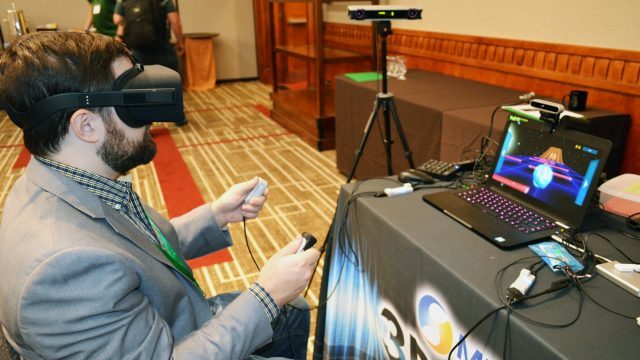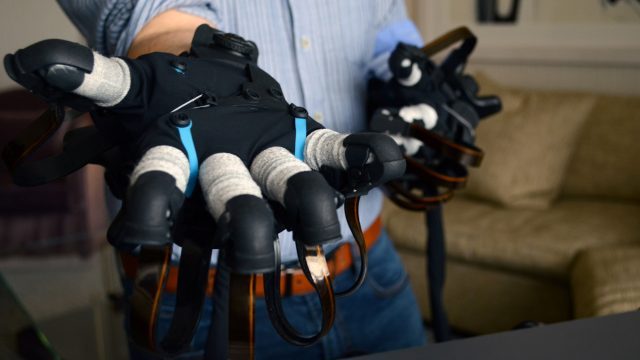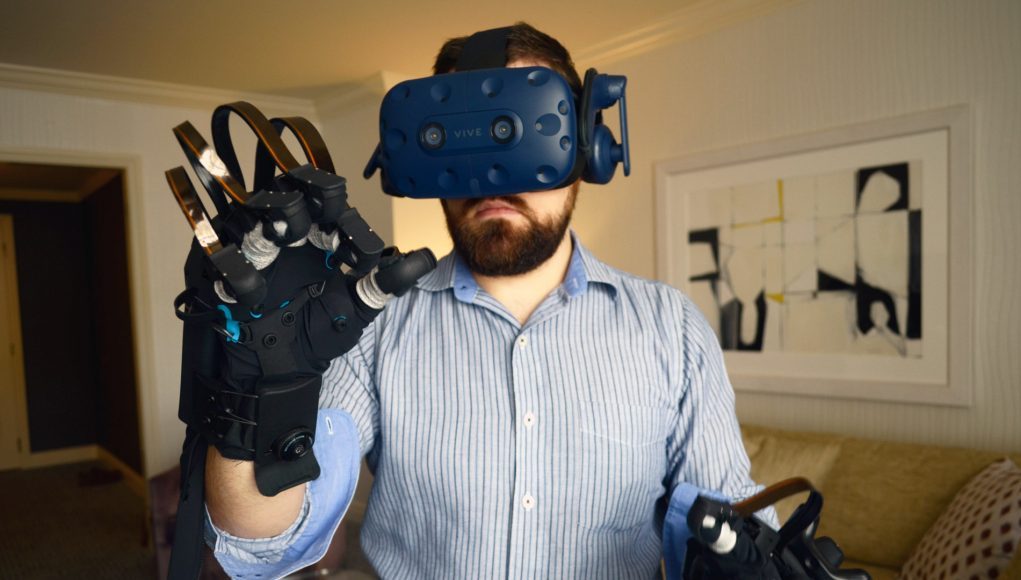Directional Haptics with Simple Hardware

In 2018 I got to demo a very unique haptic approach from a Japan-based haptics company called MIRAISENS:
The prototype 3DHaptics controllers from Miraisens do something that I didn’t previously think was possible. Being supported by nothing but your own hands, the unassuming prototype device uses vibrations to create sensations of an external force pushing or pulling your hand in specific directions. It isn’t a strong force, but it’s unmistakably directional. I closed my eyes and asked the demonstrator to choose random directions so I could guess the answer, and found that I was able to sense the intended direction with 100% accuracy.
The demonstrator ran me through a series of demos as I held the 3DHaptics prototype. After the simple directional demo, which allowed the demonstrator to point the device’s feedback at an arbitrary direction and amplitude, there was a series of examples using virtual springs which either asked me to compress or stretch a series of springs with one or two hands. The 3DHaptics feedback, combined with the visual feedback, was surprisingly compelling; it felt like the springs were pushing or pulling against my hands as I manipulated them. It felt almost like my hands wanted to move themselves in the implied direction.
What I found most interesting about this demo is that the hardware used to achieve it was dead simple. The company told me that each controller contained just two linear resonant actuators (LRA)… the same kind of haptic engine which is in many VR controllers today. Miraisens said the secret sauce that allows them to create an accurate sense of directional forces comes from the unique frequencies and waveforms with which they’re driving the LRAs. The company claims that the underlying tech is covered by several of their patents.
Holding a Virtual Object

There’s a lot of cool haptic tech out there, but to date the thing that’s given me the single most convincing sense of actually touching virtual objects has to be the HaptX VR glove.
As I explained at the time, the gloves provide two key forms of feedback:
First is pressure feedback, which aims to create subtle sensations of objects touching the user. For this, the HaptX glove uses arrays of micro-pneumatic actuators—effectively grids of little inflatable bladders which can be inflated and deflated quickly and precisely. By using the arrays to press against the palm and fingertips as needed, the glove can create a sense that an object is touching the user.
The second is force feedback, which is about pushing back or inhibiting the user’s movement in the same way that a corresponding physical object would. To this end, the HaptX glove has a mechanical brake on each finger which can prevent the finger from bending any further. For instance, when gripping a baseball, your fingers come in contact with the sides of the ball and are physically stopped by it. The HaptX glove simulates this by stopping your fingers from moving past where the point that they would stop if you were really holding a physical object.
With the two of these working in conjunction, I was blown away at how realistic it felt to rotate a completely virtual cube in my fingers:
HaptX just announced its latest version of its VR gloves, and though they are smaller than they once were, they’re still undoubtedly bulky and will likely be for some time to come. That means this kind of tech will really only fit in non-consumer scenarios where companies are willing to shell out for the added immersion.
– – — – –
While there’s a lot of cool haptic tech demos out there—many of which can greatly enhance immersion—the unfortunate fact is that there’s various reasons why we don’t already see them widely integrated into existing VR devices. Often times it’s a matter of reliability, flexibility, power consumption, manufacturing complexity, miniaturization, or just outright cost.
With that said, haptics on VR controllers are at least making some advances. PlayStation is leading the pack in that department with PSVR 2’s new controllers which newly include force-feedback triggers. And Meta is getting more serious about controller haptics with its new Touch Pro controllers which introduce stronger and more precise rumble than prior versions.







